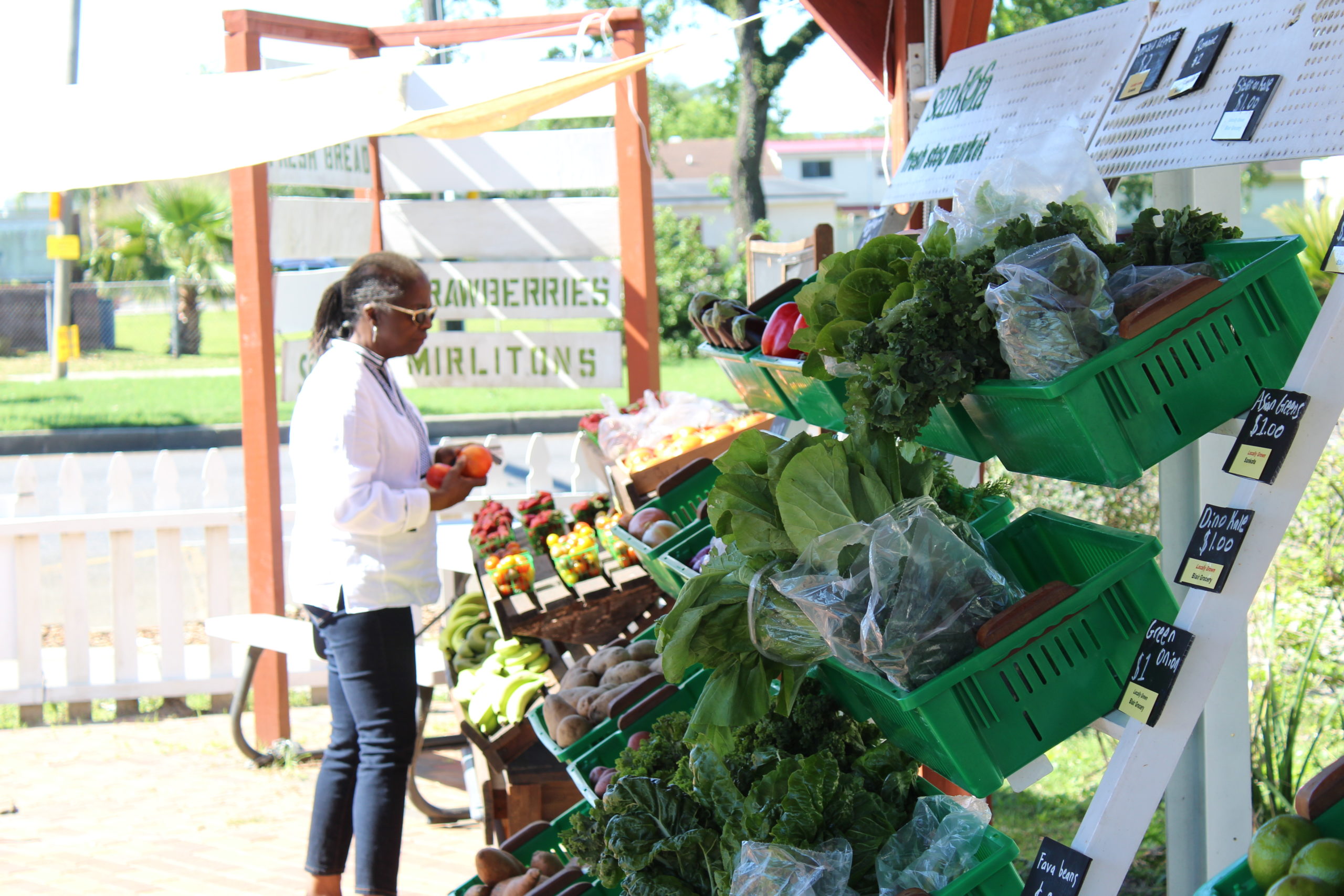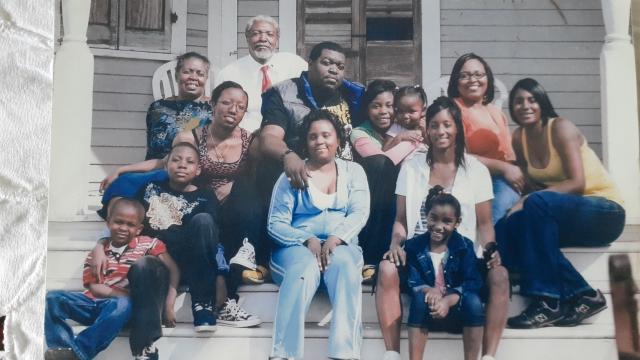Calvin Alexander bought his two-story home in New Orleans’ Lower Ninth Ward back in 1978. He and his wife raised five children there, only to nearly lose it all 15 years ago when Hurricane Katrina hit. Still, the family rebuilt. In the Lower Ninth Ward, Alexander remains.
“The immediate aftermath of Katrina was that there was hardly anyone in the neighbourhood,” Alexander said. “Much of the Lower Ninth Ward was flooded to an extent that people could not even come home. There are people, quite frankly, who are still coming home.”
What they’re coming home to is a different neighbourhood, though, even 15 years later. One of the biggest changes is access to fresh food and groceries. Or more accurately, lack thereof.
Food security has always been an issue for this neighbourhood. This became especially true after Hurricane Katrina roared through in 2005, destroying the few supermarkets nearby. The pandemic and economic crisis felt around the world only heightened an already-bad situation for the Lower Ninth Ward.
The area is now a food desert, defined by the Department of Agriculture as a low-income census tract with a high poverty rate and without access to a large grocery store or supermarket. While there are corner stores throughout the neighbourhood, they often don’t offer fresh fruits and vegetable families need to stay healthy, especially during the coronavirus pandemic. When the stores do offer these options, they’re often more expensive than a proper grocery store chain would sell them.
Fifteen years later, Hurricane Katrina’s legacy carries on. The coronavirus public health crisis has increased the urgency for access to healthy, fresh foods. Residents here aren’t waiting for help, though. In the years since Katrina, they’ve come to rely on each other.
Hurricane Katrina dropped nearly 38 centimetres of rain in Louisiana while its storm surge left most of New Orleans covered in 4.5 to 6 metres of water. The Lower Ninth Ward was the epicentre of the flooding after the levees protecting it breached and sent water pouring in.
But that was only one part of the disaster. Decades of disinvestment had left the neighbourhood socially vulnerable, and Katrina only made it worse by reducing access to fresh food. In the 15 years since the storm, grocery stores have failed to come back to the area, and many of the problems from before Katrina remain or have worsened.
In 2000, poverty levels in the ward were more than double that of the U.S. average. That remains true today, with the average household income sitting around $US33,000 ($44,791). Poverty and disinvestment have led to the failed recovery efforts in the neighbourhood, as well as the food insecurity the community continues to face. Families need money to rebuild. And they need money to feed their families healthy meals.
Yet poor people spend nearly as much money on food as those that are more well off, according to the U.S. Department of Agriculture data. That means more of their overall income is going into food. Living in a food desert makes it even harder for residents there to access fresh food in the first place.
“You cannot talk about food justice without talking about the larger context, and the larger context is economic insecurity,” said Faye Matthews, the legal policy adviser for the Mississippi River Delta Restoration and Gulf Restoration with the National Wildlife Federation. “Racial and economic justice are two prerequisites for food justice .”
Grocery stores need to make money, too, which is in part why none rebuilt after Katrina destroyed them. Their customer base was gone. More than half of residents in the Lower Ninth Ward have yet to return 15 years after the stormwater receded. Those who stayed rely on corner stores because they’re closest, according to surveys conducted in the years after Katrina from the Tulane Prevention Research Centre. However, what residents want are more grocery stores. In the Lower Ninth Ward, residents have four convenience stores but need to cross the Claiborne Avenue Bridge if they want to shop at a larger supermarket.
Walking from Alexander’s home, which sits closer to the Mississippi River, to a supermarket could take a person upwards of a half-hour. Having a car helps, of course, but more than a quarter of the community doesn’t have a vehicle available. Meanwhile, 40% of the residents here are 50 or older. This is not a community where individuals can take regular 45-minute walks to the grocery store then carry it all back home.
“The grocery stores are not accessible,” said Katherine Egland, who chairs the board of the NAACP’s Environmental and Climate Justice Committee. “That contributes to all of these health problems because you’ve got a high obesity rate, a high rate of diabetes, and other health-related illnesses… So you have the health problems, you’ve got the lack of access to fresh fruits and vegetables, and then you have flooding.”
Peer-reviewed papers looking at California and the Twin Cities region have found that corner stores not only tend to carry lower-quality produce, but they also tend to charge more for it. In California, convenience store produce may cost double what it would at a supermarket while prices are up to 50% higher at convenience stores in the Minneapolis-St. Paul area. The same issues are playing out in the Lower Ninth Ward; the convenience stores there are fine if you need a gallon of milk or a six-pack of beer, but they aren’t exactly where you go to buy vegetables for a healthy dinner.
“We see that an apple may cost you more than a sugary drink in the corner store,” said Arthur Johnson, CEO of the Lower Ninth Ward’s Centre for Sustainable Engagement and Development.
When the coronavirus hit the community, these health disparities became even clearer. The highly contagious virus is most deadly to those already suffering from heart and respiratory issues. New Orleans was one of the early hot spots in the U.S., which local doctors attributed to its high obesity, hypertension, and diabetes rates. More than 4,600 people have died in the state. Since Sunday, New Orleans has reported at least 23 new covid-19 cases.
When placed in the context of the pandemic, food security problems are even more unjust. Survivors of the pandemic can only sit and wonder who might still be alive from the virus had they been able to afford or find healthier, fresher foods.
In the Lower Ninth Ward, however, organisers are doing something about these problems. Rashida Ferdinand, the founder and executive director of Sankofa, is leading these efforts. Her post-Katrina organisation is dedicated entirely to improving food access.
It started with creating a local farmer’s market in the Lower Ninth Ward. Then, mobile food pantries and outdoor markets. Now, Ferdinand is in the process of constructing a permanent market she’s hoping to open by April next year.

“We’re able to do this work as a nonprofit, and it’s taken us a long time to get the capacity to pull this off,” Ferdinand said. “Even when you do get somewhat of that capacity, it’s still somewhat of a risk. You have to get your return to cover the expenses.”
Grocery stores require a strong customer base to sustain themselves. Remember, that’s what’s kept other grocers from setting up shop after Katrina. Still, Ferdinand believes this investment is worth it. She hopes the city invests more resources into projects like these to create more opportunities for residents of the Lower Ninth Ward. The neighbourhood needs sustainable development led by locals.
The coronavirus has really amplified the community needs that remain since Hurricane Katrina hit nearly 15 years ago. Food access is undeniable.
Alexander comes from a family of volunteers, so he’s been contributing to the crisis in every way he can. He works with a local nonprofit to help distribute fresh produce, dairy, meat, and eggs twice a month. Every Tuesday and Friday morning, he’s out distributing thousands of prepared meals with a local church.
He lived through one of the city’s darkest times 15 years ago. That showed him what disaster looks like. Now, he’s seeing what strength looks like.
“New Orleanians are so independent and generally look to stand on their own two feet,” he said. “Somehow, we find a way to make things happen and to do the things we need to get done. Sometimes, the challenges are a little bit too large and a little bit too great for some. That is the kind of thing that this part of the country is known for: looking out for each other.”
